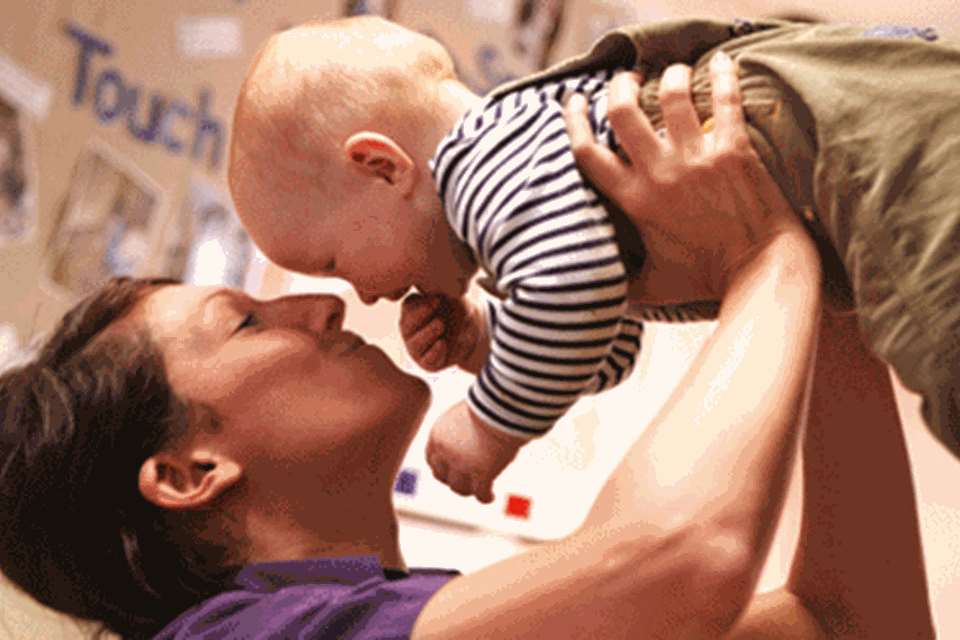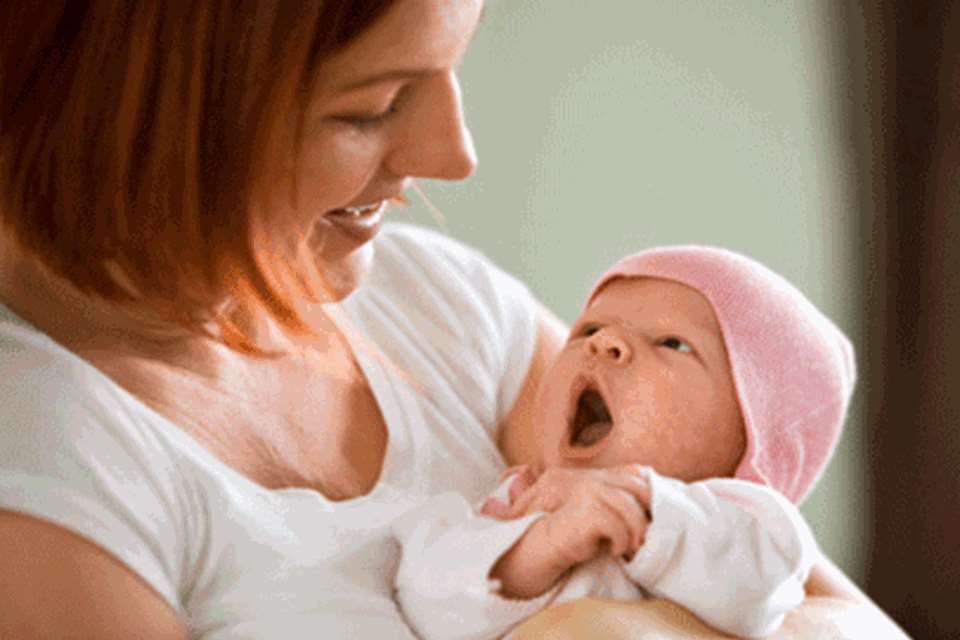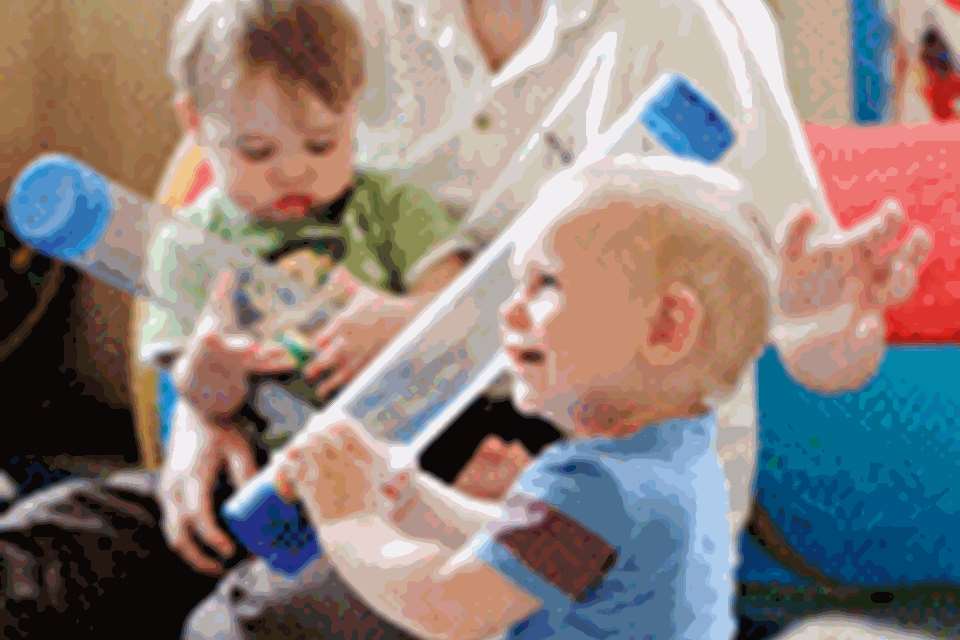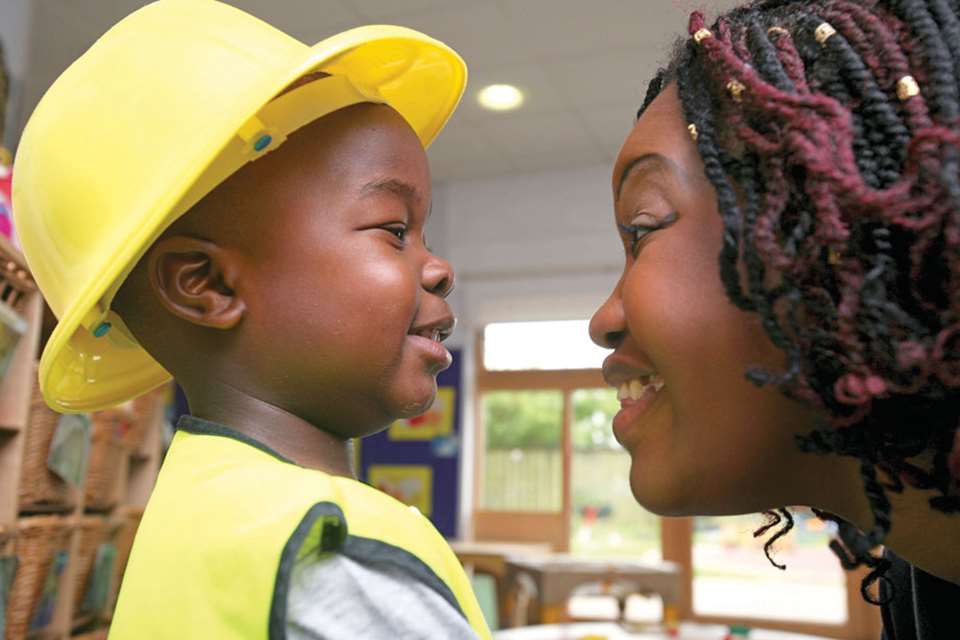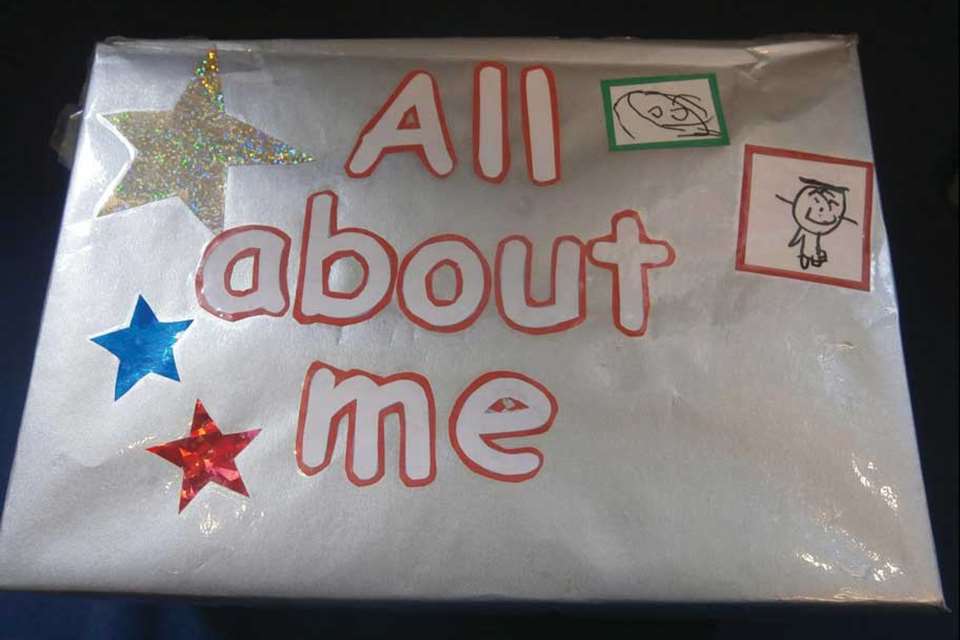Nursery Equipment: Communication & Language - So to speak
judith Stevens
Wednesday, May 20, 2015
Use targeted resources that are meaningful to children to get them talking, says Judith Stevens.

What sort of resources are likely to promote talk in children? Essentially, it will be things that interest them. This will vary over time, but often include, of course, familiar things: themselves, their friends and families, homes, food, animals and, very often, popular culture, including the latest movie or toy.
One of the most common mistakes that nurseries make in buying resources to support communication and language is to muddle 'speaking and listening' with 'phonics, reading and writing'.
Once practitioners are clear that children need to have lots to talk about before they will write, lots they want to listen to before they will read, and lots of time to distinguish between 'big sounds' before they can identify individual phonemes, then the 'resources' needed to promote talk become more obvious. It is also vital that practitioners model both speaking and listening.
SPACES TO TALK
One of the most powerful findings from the Every Child a Talker programme was that children like, and need, cosy spaces to talk, both indoors and outdoors.
Practitioners should ensure that environments offer spaces for children to be social and chat together in pairs and small groups, and room layouts, dividers and furniture all have a key role to play in this.
Children often chat most when they feel really secure, comfortable and relaxed. They need spaces to lie on the floor, snuggle into beanbags or cushions or sit close together on comfortable chairs and sofas.
It is worth looking at the outdoor seating, too. Are benches around the walls or grouped together, socially, to encourage chat? Are there small spaces to sit inside? Dens made with and by children create natural small spaces to gather together, relax and chat.
Some resource suggestions
For indoor beanbags, check out Wesco's Maxi Pack of three Beanbag Chairs (£236.80) or try Big Oval Bean Bags (£112.95 for two) from Early Years Resources. And for outdoors, there is the Large Bean Bags (£349 for a set of three) from Playforce.
For 'cosy' space, indoors and out, see pages 8-10 and 30-31.
SMALL-WORLD PLAY
Small-world play is essential for the development of language for thinking. As children act out scenarios that are meaningful to them, they may verbalise to themselves, or chat with others. Every setting needs a range of high-quality, durable small-world resources, easily accessible to children.
As a rule of thumb, the younger the child, the larger the resource. It is better to have a small selection of quality, robust wild animals and cars for two-year-olds than a motley collection of small plastic animals. Small-world resources can be used indoors and outdoors, on the floor, in trays, or with water, sand, mud and natural resour- ces. Supplies that can be presented flexibly and creatively include:
- cars, garages, road mats and traffic signs
- trains, tracks, airports and planes
- wild animals, farm animals, sea creatures and minibeasts
- doll's houses and furniture
- fantasy worlds and fairies
- dinosaurs
- space and aliens.
Of course, the most important thing is that children relate to the resources, and want to talk about them. So the choice of 'people' and 'figures' is crucial. Small plastic, wooden and rag figures can be easily supplemented by home-made 'mini-mes' - laminated photos of every child, stuck to wooden blocks, which become the stars of children's own tales.
Wherever possible, customise small-world play by the addition of laminated images of buildings that children see and places they know as backdrops or play mats.
Some resource suggestions
Tuff Spot trays, now a staple of small-world provision, are available from leading early years suppliers. Also available are related products such as the Tuff Spot grass inserts (£12.95) from Cosy.
 Scene kits from Yellow Door include the Fantasy Kingdom (£35.50). Other themes are Pirates, Fantasy Lands and Fairy Tales. New to the range are Jumbo Dinosaurs (£26), but look out too for the pack of Dinosaur Skull Figures (£12) and the Dinosaur Bones Discovery Set (£15).
Scene kits from Yellow Door include the Fantasy Kingdom (£35.50). Other themes are Pirates, Fantasy Lands and Fairy Tales. New to the range are Jumbo Dinosaurs (£26), but look out too for the pack of Dinosaur Skull Figures (£12) and the Dinosaur Bones Discovery Set (£15).
The Holztiger range of chunky animals and figures includes forest, farm and marine animals, as well as knights, dragons and princesses. Smooth and hand-crafted, the range is larger than average small-world resources - for example, take the Black Bull (19cm x 2.8cm x 13.5cm) and Zebra (15cm x 2.8cm x 14cm). Prices start at £4.95 and they are available from Mindstretchers and Salago.
Cosy offers a wide variety of fairy garden and fantasy resources, including Tree Stump Cave (£8.99), Fairy Door and Window (£6.99), a set of six Dragons (£11.89), and Rustic Castle (£37.50).
Wesco offers a wooden open-plan Eco-Design Doll's House (£60.80) and wooden Furniture for Doll's House, which can be bought by the room (£11.10 each) or as a Maxi Pack (£60.20). Or try Hope Education's All Seasons Play House (£134.95), open-ended and wooden with six rooms and moveable stairs. Doll's houses and furniture are also available from Never Never Land, including the Chunky Kitchen Set (£25).
For transport, check out Hope Education's Vehicle Pack of chunky toys (£19.95). See also its Construction Vehicles Set (£36.95).
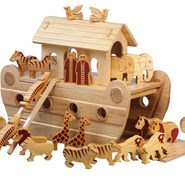 Fair trade small-world sets from Sri Lanka include Natural Noah's Ark (£135), Natural Castle (£90) and Natural Farm (£125), all from Early Years Direct.
Fair trade small-world sets from Sri Lanka include Natural Noah's Ark (£135), Natural Castle (£90) and Natural Farm (£125), all from Early Years Direct.
SUPPORTING LISTENING
Children need lots of opportunities to develop their listening skills, as well as their talking skills. It is important that practitioners always remember that communication is a two-way process - the sending and receiving of messages. So, in addition to actively modelling 'listening', settings should plan experiences to support listening. Essential resources include:
- sound lotto games
- microphones
- recording equipment, including talking postcards, tins and buttons
- talking books - most popular picture books have audio editions
- CDs and CD players with headphones
- recorded rhymes and stories (why not record your own versions?)
- sound-making equipment, including shakers.
Some resource suggestions
Listening Lotto Games (£17.99) from TTS Group.
Who's Speaking, Who's Listening Set (£49.99) from Reflections on Learning, connects hollow tubes and telephone handsets to a central hub to promote conversations between a group of up to six children.
A selection of musical instruments, including Egg Shakers (£1.49 each), are available from Music Educational Supplies (MES).
For suggestions for recording equipment and other ICT resources, see pages 32-34.
BOOKS AND RHYMES
Never underestimate the power of favourite books and rhymes to promote speaking and listening. It is essential to 'tune into' children to discover their current interests and introduce rhymes and stories to support individuals. Be guided by the children, and use your imagination to inspire children's own talk.
Try to engage families in sharing rhymes and make up rhyme bags to support half a dozen favourites. For example, a Twinkle Twinkle Little Star bag could include a selection of stars, a torch, a book and a recording of the rhyme.
Some resource suggestions
For collections of traditional rhymes, try: Three Little Kittens and Other Favourite Nursery Rhymes by Tony Ross; The Helen Oxenbury Nursery Collection; and Mother Goose's Nursery Rhymes by Axel Scheffler. For international rhymes, look out for collections such as My Village: rhymes from around the world by Danielle Wright and Mique Moriuchi.
For traditional tales, check out Yellow Door's Traditional Tales Big Books Set (£75).
PUPPETS
Remember that sometimes, quiet children prefer to talk to puppets rather than people. Leading early years suppliers stock some puppets and a huge array is available.
Puppets by Post supplies finger and hand puppets (from £3.50 and £4.50 respectively), marionettes (from £22.50), puppet theatres, books, puppets packs, soft toys and kits for making your own puppets.
Try the Wild Animal Finger Puppets by Albetta (£10 for four) and Hand-Knitted Organic Cotton Panda Puppet (£20) by Chunkichilli, both at Not on the High Street, or the 25 Hand-Knitted Finger Puppets Peru (£21.10) and a Felt Finger Puppet Monkey Pattern (84p) from Etsy.
MORE INFORMATION
Cosy Direct, www.cosydirect.com
Early Years Direct, www.earlyyearsdirect.com
Elizabeth Jarman supplies The Communication Friendly Spaces Handbook (£25) and A Place to Talk series, www.elizabethjarmantraining.co.uk
Etsy, www.etsy.com
Lawrence Educational has books on communication, www.lawrenceeducational.co.uk
Mindstretchers, www.mindstretchers.co.uk
MES, www.mesdirect.com
Never Never Land, www.never-never-land.co.uk
Not on the High Street, www.notonthehighstreet.com
Playforce, www.playforce.co.uk
Puppets by Post, www.puppetsbypost.com
Reflections on Learning, www.reflectionsonlearning.co.uk
Salago, www.salago.co.uk
TTS Group, www.tts-group.co.uk
Yellow Door, www.yellow-door.net.


